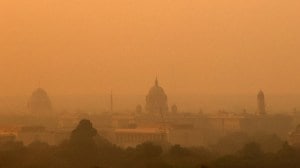A surreal brush with human issues
VADODARA, July 30: Vadodara-based artist Musa Katchhi is today a recognised surreal artist. Though his interest in painting has been life...

VADODARA, July 30: Vadodara-based artist Musa Katchhi is today a recognised surreal artist. Though his interest in painting has been lifelong, his initiation into the artistic world is a tale of hardship and of overcoming odds.
Katchhi’s father expired when he was just one year old, forcing the budding artist to work to supplement the family income when he had just started going to school. The 1969 riots in Ahmedabad, where his family was settled, proved to be a turning point in his life. “My family lost everything, including two trucks with which my brother had started a small business. I could have picked up the sword, but picked up the brush instead”, he says today.
After the riots, Katchhi moved to Mumbai, where he came in contact with a cinema poster artist, Vaman Rao, who offered him the job of an apprentice painter. Rao also introduced him to a fine arts course run by the Maharaja Sayajirao University in Vadodara. That proved to be the second turning point, as Katchhi, keen to become a professional artist, moved to Vadodara to work on a post-graduate diploma in Creative Painting.
But how did Katchhi enter the mysterious realm of surreal painting? “As a child, I heard the Quranic precept that every living being is to die one day’. It inspired me and had a great impact on my art and life”, says Katchhi. “Surrealistic painting became the road for me to explore the psychological enigma of death and the life after.”
He adds, “As my painting developed technically, I continued to explore the world of death, pain and sexual desire as I believe these subconscious constants are vital to our existence. In the school of surrealism propounded by celebrated artist Salvador Dali, my paintings show subconscious pain, fear, laughter, innocence, stress, joy and happiness.”
Katchhi appears to be greatly influenced by the tragedies of life around him. His painting titled Wounded Peace’, based on the 1992 communal clashes, captures the horrors of rioting, with the snake of hatred and devil of violence stalking from two corners, a beheaded Maulana and Pandit, representing religious grief and policemen helpless to protect society from the communal cauldron. In another painting titled Liquor Tragedy’, Katchhi depicts the corruption that is literally killing people.
Katchhi is highly critical of renowned painter M F Husain who, he alleges, is venturing into “obscene” painting for money. “Painting is not a medium to distort history or mythology and cast aspersions on religious celebrities”, he says, adding that Husain must avoid such tactics.
Katchhi has painted the portraits of and presented them to former prime ministers Indira Gandhi and Rajiv Gandhi. He has organised exhibitions of his paintings in Vadodara, Ahmedabad and Mumbai, besides Los Angeles, San Francisco, and Berkeley in the United States. He plans another exhibition in the US in November.
Katchhi has received several awards, including the Gujarat Lalit Kala Akademi award, and honours for his work.
Top



- 01
- 02
- 03
- 04
- 05




























